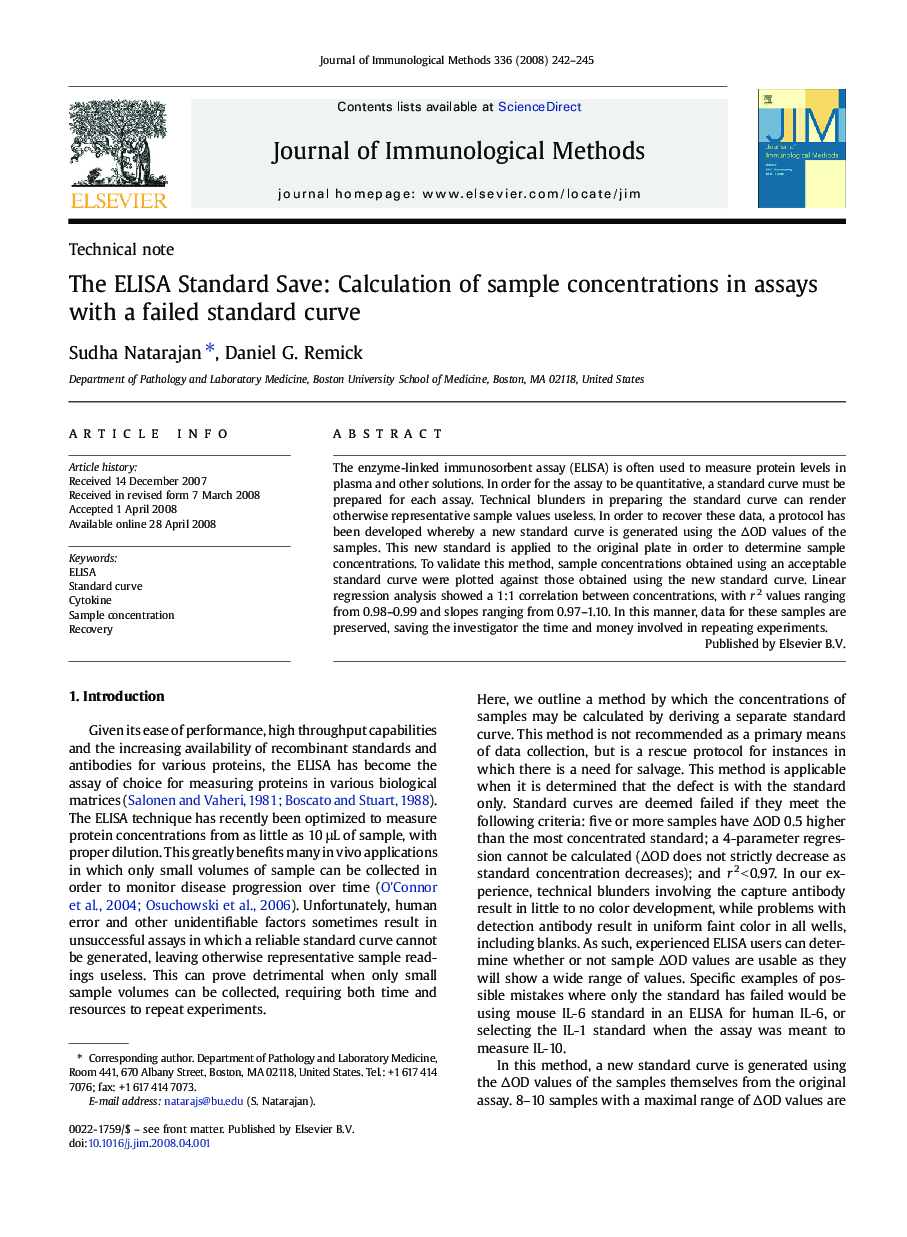| Article ID | Journal | Published Year | Pages | File Type |
|---|---|---|---|---|
| 10889339 | Journal of Immunological Methods | 2008 | 4 Pages |
Abstract
The enzyme-linked immunosorbent assay (ELISA) is often used to measure protein levels in plasma and other solutions. In order for the assay to be quantitative, a standard curve must be prepared for each assay. Technical blunders in preparing the standard curve can render otherwise representative sample values useless. In order to recover these data, a protocol has been developed whereby a new standard curve is generated using the ÎOD values of the samples. This new standard is applied to the original plate in order to determine sample concentrations. To validate this method, sample concentrations obtained using an acceptable standard curve were plotted against those obtained using the new standard curve. Linear regression analysis showed a 1:1 correlation between concentrations, with r2 values ranging from 0.98-0.99 and slopes ranging from 0.97-1.10. In this manner, data for these samples are preserved, saving the investigator the time and money involved in repeating experiments.
Related Topics
Life Sciences
Biochemistry, Genetics and Molecular Biology
Biotechnology
Authors
Sudha Natarajan, Daniel G. Remick,
